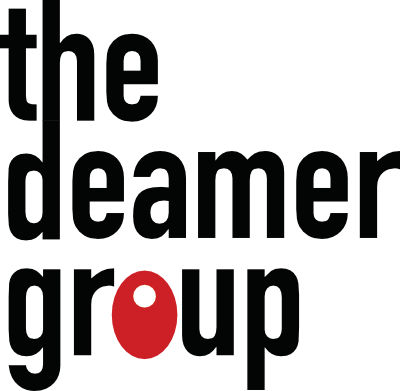As you likely know, the name of the retention game is hiring and onboarding engaged employees. In business, some turnover is inevitable, but the key idea is that low engagement doesn’t have to be.
Since we can’t address the problem of retention until we understand it, here’s some food for thought regarding recent hires:
A Robert Half Survey found that as many as 28% of candidates said they have backed out after accepting a job offer. While 71% of that number did so because of better offers or counteroffers from a different or current employer, saliently, 19% of those who have rejected a job offer did so because they had heard bad things about the offering company.
Meanwhile, in a Korn Ferry study, 90% of executives said they struggle to keep new hires onboard, with the majority saying between 10% to 25% of new hires leave within six months. (According to the Center of Generational Kinetics, one-third of new hires decide if they want to stay at your company long-term within a week of starting the job.)
What do you think causes employees to leave their jobs (aside from sometimes unpredictable ghosting)?
Bad reputations and low expectations
Nowadays, job seekers can find a lot of information about a company online before coming in contact with the company’s own branding efforts. Sites like Glassdoor, Great Place to Work, and Indeed make it easy for unhappy former employees (the ones you want to avoid creating!) to have the first (and last) word.
To drive the point home, only 1 in 5 job seekers will apply to a company with a bad reputation. It’s never too early to start emphasizing what makes your business an attractive workplace. Be sure, however, that you are also presenting a transparent and honest picture. The Robert Half survey found new employees often leave soon after starting a new job if it wasn’t what they expected (and possibly make their negative impression public online).
The same survey also found 19% of firm executives said new hires, especially millennials (currently the largest segment of the workforce), leave because they don’t like their organization’s culture.
What’s HR to do?
Unsurprisingly, too-frequent turnover has a deeply negative impact on employee morale and productivity as well as company revenue, creating a vicious cycle. One of the tell-tale signs of impending turnover is low engagement.
Research from Peakon has found that employee engagement and loyalty drop nine months before they ultimately quit.
It’s critical for HR to be upfront with candidates and interviewees about their employers’ values, mission, and expectations. To start, HR departments should partner in efforts to build social media campaigns or internships that create important first points of contact for brand awareness.
Where it comes to the important process of building company culture, you can work towards a uniform approach for addressing common tensions that both ensures each employee is treated fairly and equally while also giving employees a sense of pride in their company’s values.
In the ideal case, new hires should already be familiar with their prospective employers’ culture before they step on the job. To that end…
Start onboarding before Day One
A major way to make company goals clear is to ensure that job ad descriptions both align with and give a sense of company culture and are an accurate depiction of what the position requires.
Direct and clear communication is always key to minimize chances for misunderstanding. Once a candidate becomes an employee, inform them of any changes in their role to avoid the dreaded “This job isn’t what I thought it was” reaction.
Not only does strong communication establish positive employer branding, it sets new hires at ease. Here are a few ideas to make a new hire’s first day (or the days leading up to it) memorable:
- Send them a first-day walkthrough email a day or two beforehand, so they know exactly what to expect
- Have their manager give them a phone call to discuss first-day responsibilities and tame anxieties
- Put a personal touch on the process with a welcome pack and card on their desk
Being in regular contact before the start date is a good time investment that reduces the risk of confusion and turnover later.
Stick to the buddy system
It’s very common for HR to set new hires up with a buddy in their department to help them adjust to their new job and responsibilities. This is, of course, a good start. But you can go even one or two further.
Here’s a couple ways you might buddy up seasoned employees with those still new to the team:
- If your workplace requires a lot of interdepartmental cooperation (for example, where marketing interfaces heavily with sales), designate a cross-departmental buddy to ease your hire into this transition.
- A large number of new hires, while possessing the desired skillset, are still unsuccessful in their roles because they are a bad cultural fit. Consider choosing a well-adjusted employee as your new hire’s culture buddy.
Remember, one-third of new hires decide about their long-term future at your company within just the first seven days. Having more than one “buddy” is a great way to bring onboarding full-circle–you’re both introducing new employees to the company culture and reinforcing their support system during the adjustment period that buoys their sense of comfort and loyalty to their workplace.
Happy employees help businesses thrive
The best thing for positive company culture and happy workers is an open and honest environment where employees feel comfortable discussing their concerns about work requirements, compensation, and opportunities for personal development.
Since Rome was not built in a day nor by one person (or department), start a dialogue with your senior leadership about how you can contribute towards the creation of such a workplace.
Bottom line: Recruitment is responsible for retention
As a recruiter, you are a first-frontier brand ambassador!
Since you want to hire good fits for both culture and skills, you are responsible for ensuring that job descriptions give a clear and accurate depiction of the expectations of the role. Employees who learn they will not be doing what they were promised or feel the company culture was misrepresented will become disengaged.
The rule of thumb for creating a smooth transition from potential hire to employee who fulfills their potential is company culture first and hiring second, never the other way around. Well-informed hires who already have a sense of what to expect in the workplace will be happier, more engaged, and more likely to stay.

